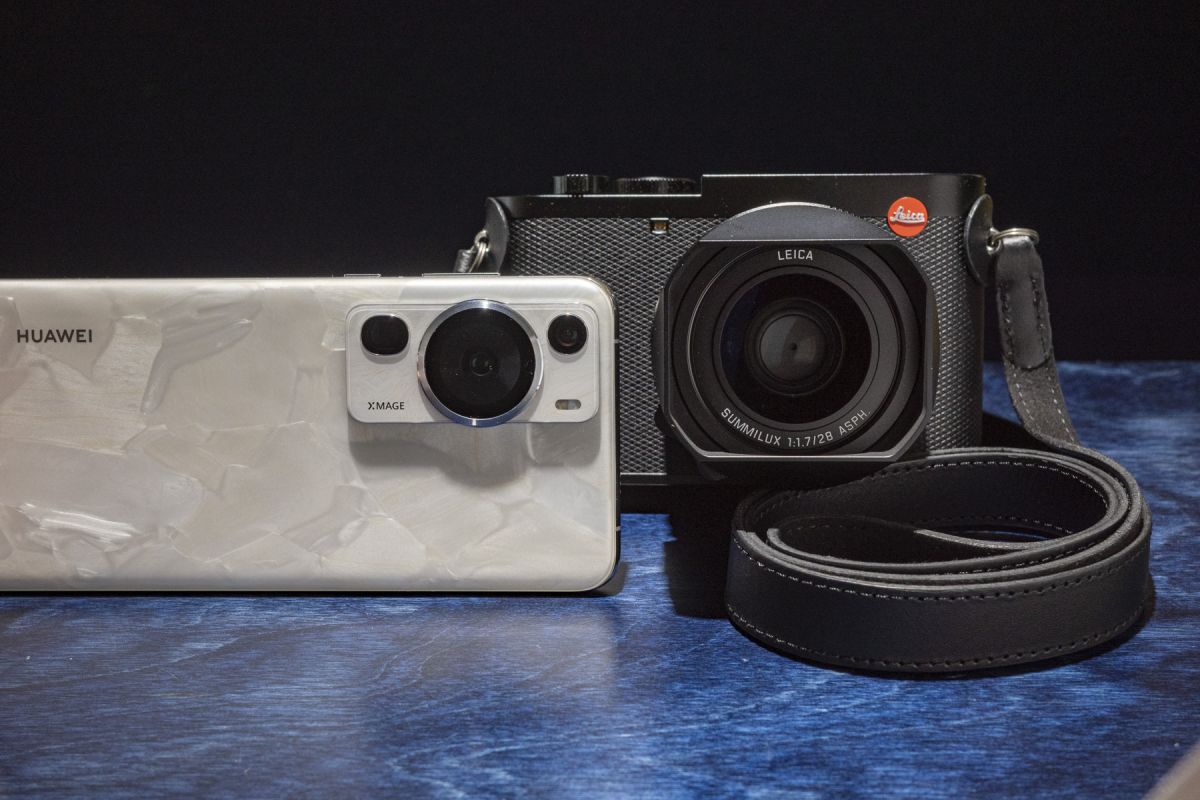At first glance, comparing the full-frame Leica Q3 (€6,735 premium compact camera) with the Huawei P60 Pro smartphone might seem absurd. However, in 2025, this comparison remains surprisingly relevant.
In recent years, high-end smartphone cameras have disrupted the dedicated camera market, while premium compact cameras have evolved to maintain their edge. Both devices represent cutting-edge photography technology in their respective categories, sharing more similarities than you might expect.
After extensive side-by-side testing over several weeks, we’ve evaluated their everyday performance and image capabilities. Here’s what we discovered.
Handling Experience
Leica Q3: Photography Perfection
The Leica Q3 remains one of the most powerful, enjoyable, and premium compact cameras available in 2025. While its price puts it beyond most budgets, those who can afford it enjoy an exceptional photographic experience:
- The 28mm f/1.7 prime lens delivers outstanding quality with smooth manual focus
- Leica’s advanced autofocus system performs admirably for those who prefer it
- Dedicated macro mode enables closer focusing capabilities
- Tilting touchscreen provides flexible composition options
- Crisp electronic viewfinder offers superior visibility in bright conditions
- Customizable controls within a minimalist design maintain functionality
- Intuitive interface encourages daily use and creative exploration
Huawei P60 Pro: Phone First, Camera Second
As a smartphone, the P60 Pro’s primary function remains communication, making its photography handling inherently less optimized than the Q3:
- Multi-functional nature can distract from creative photography
- Still lacks Google services (due to ongoing US sanctions), which paradoxically helps focus on its camera capabilities
- For serious photography use, an optional grip significantly improves handling
- Even with accessories, the ergonomics cannot match a dedicated camera like the Q3
Lens Capabilities
Huawei P60 Pro: Versatile Multi-Lens System
The P60 Pro’s camera system remains impressive even in 2025:
- 25mm (approximate) main camera with variable aperture (f/1.4 to f/4)
- Industry-leading close-focus capabilities for smartphone macro photography
- Secondary 3.5x zoom lens (approximately 90mm equivalent)
- Digital zoom up to 10x maintains respectable sharpness
- AI-enhanced image processing compensates for smaller sensors
Leica Q3: Prime Lens Excellence
The Q3’s single 28mm built-in lens slightly differs from the P60 Pro’s main camera:
- Dedicated digital crop mode emulates 35mm, 50mm, 75mm, and 90mm focal lengths
- 60.3MP resolution ensures usable quality even when cropped
- Superior lens detail compared to smartphone optics, especially noticeable in larger prints
- Larger sensor provides natural depth and clarity
- While the smartphone sets new standards for mobile photography, it can’t match the Q3’s optical quality
Everyday Photography Performance
Both cameras excel as daily companions, capable of capturing portraits, landscapes, macro, and telephoto subjects with impressive results. The fundamental difference lies in their approach:
- Leica Q3: Relies on superior hardware for organic, true-to-life results
- Huawei P60 Pro: Leverages sophisticated AI-based software to enhance images and create complex effects
Image Quality Comparison
Portrait Photography
- Color accuracy: The Leica Q3 significantly outperforms the P60 Pro
- Bokeh effects: The P60 Pro excels with AI-powered portrait mode offering various bokeh styles (circles, swirls)
- Detail rendering: The P60 Pro’s artificial depth shows artifacts around fine details like hair, though it minimizes these better than most smartphones
- Focal length: The Q3’s 28mm lens isn’t ideal for portraits, but digital crop to 75mm creates flattering results
- Natural depth: The Q3’s full-frame sensor and f/1.7 aperture produce authentic bokeh, though not as perfectly shaped as the P60 Pro’s AI-generated version
Macro Photography
- Close focusing: The P60 Pro achieves closer focusing distances than the Q3
- Depth of field: The smartphone’s smaller sensor provides greater depth of field, keeping tiny subjects sharper throughout
- Image quality: The Q3’s macro setting (focusing at 17cm) delivers superb results, especially when combined with 90mm digital crop
- Creative control: The Q3’s large sensor and fast aperture allow for more artistic depth effects in macro shots
Low-Light Photography
- AI processing: The P60 Pro employs extensive AI to brighten night scenes, sometimes making twilight appear almost like daytime
- Manual control: The P60 Pro’s Pro shooting mode provides full exposure control for more natural night photography
- Natural performance: The Q3’s full-frame sensor produces cleaner images with better dynamic range outside of smartphone night modes
- Handheld shooting: The P60 Pro is more forgiving for handheld night photography, while the Q3 requires a tripod for optimal long-exposure results
Conclusion: Which Camera Reigns Supreme in 2025?
The Leica Q3 continues to demonstrate why dedicated cameras remain relevant: delivering an engaging photographic experience with naturally stunning images. For photography enthusiasts who prioritize image quality and tactile experience, it remains the superior choice.
The Huawei P60 Pro maintains its position as one of the most capable camera phones, fitting easily in a pocket and potentially serving as a dedicated compact camera. An optional grip improves the handling considerably for serious photography use.
Our image quality assessment remains mixed:
- The Leica Q3 produces superior natural-looking images, especially regarding color accuracy
- The Huawei P60 Pro’s AI enhancements, particularly for effects like bokeh, offer creative possibilities unavailable to traditional cameras
For daily photography without budget constraints, the Leica Q3 remains our preference. However, at approximately one-quarter the price, the P60 Pro represents exceptional value and versatility for many users.
In 2025, photography technology continues to impress across both dedicated cameras and smartphones, offering exceptional tools for those who can afford them.

Leave a Reply